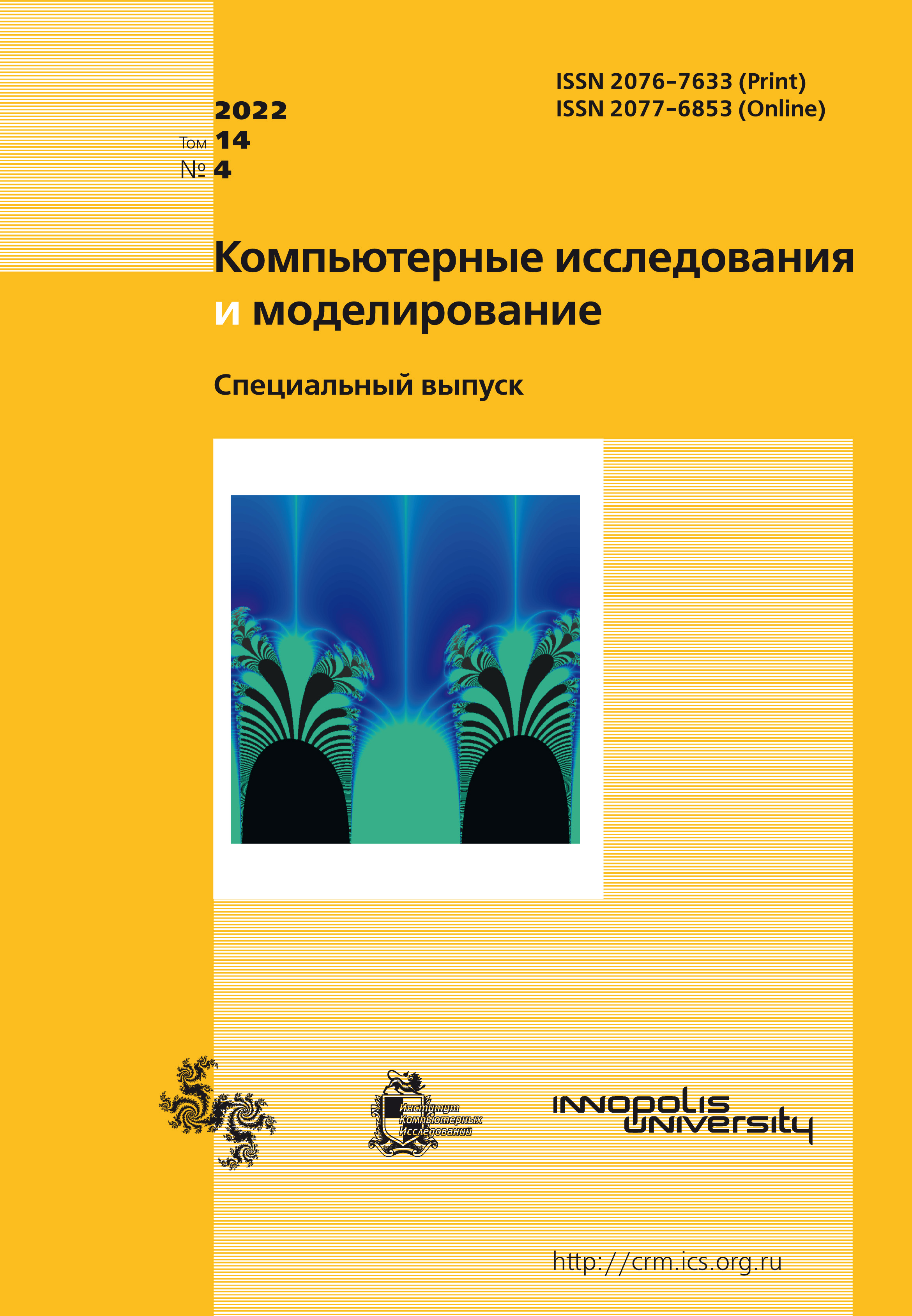All issues
- 2024 Vol. 16
- Issue 1 (special issue)
- 2023 Vol. 15
- 2022 Vol. 14
- 2021 Vol. 13
- 2020 Vol. 12
- 2019 Vol. 11
- 2018 Vol. 10
- 2017 Vol. 9
- 2016 Vol. 8
- 2015 Vol. 7
- 2014 Vol. 6
- 2013 Vol. 5
- 2012 Vol. 4
- 2011 Vol. 3
- 2010 Vol. 2
- 2009 Vol. 1
Numerical study of the dynamics of motion of a square body in a supersonic flow behind a shock wave
 pdf (2300K)
pdf (2300K)
In a number of fundamental and practical problems, it is necessary to describe the dynamics of the motion of complexshaped particles in a high-speed gas flow. An example is the movement of coal particles behind the front of a strong shock wave during an explosion in a coal mine. The paper is devoted to numerical simulation of the dynamics of translational and rotational motion of a square-shaped body, as an example of a particle of a more complex shape than a round one, in a supersonic flow behind a passing shock wave. The formulation of the problem approximately corresponds to the experiments of Professor V. M. Boiko and Professor S. V. Poplavski (ITAM SB RAS).
Mathematical model is based on the two-dimensional Euler equations, which are solved in a region with varying boundaries. The defining system of equations is integrated using an explicit scheme and the Cartesian grid method which was developed and verified earlier. The computational algorithm at the time integration step includes: determining the step value, calculating the dynamics of the body movement (determining the force and moment acting on the body; determining the linear and angular velocities of the body; calculating the new coordinates of the body), calculating the gas parameters. To calculate numerical fluxes through the edges of the cell intersected by the boundaries of the body, we use a two-wave approximation for solving the Riemann problem and the Steger – Warming scheme.
The movement of a square with a side of 6 mm was initiated by the passage of a shock wave with a Mach number of 3,0 propagating in a flat channel 800 mm long and 60 mm wide. The channel was filled with air at low pressure. Different initial orientation of the square relative to the channel axis was considered. It is found that the initial position of the square with its side across the flow is less stable during its movement than the initial position with a diagonal across the flow. In this case, the calculated results qualitatively correspond to experimental observations. For the intermediate initial positions of a square, a typical mode of its motion is described, consisting of oscillations close to harmonic, turning into rotation with a constant average angular velocity. During the movement of the square, there is an average monotonous decrease in the distance between the center of mass and the center of pressure to zero.
Indexed in Scopus
Full-text version of the journal is also available on the web site of the scientific electronic library eLIBRARY.RU
The journal is included in the Russian Science Citation Index
The journal is included in the RSCI
International Interdisciplinary Conference "Mathematics. Computing. Education"






